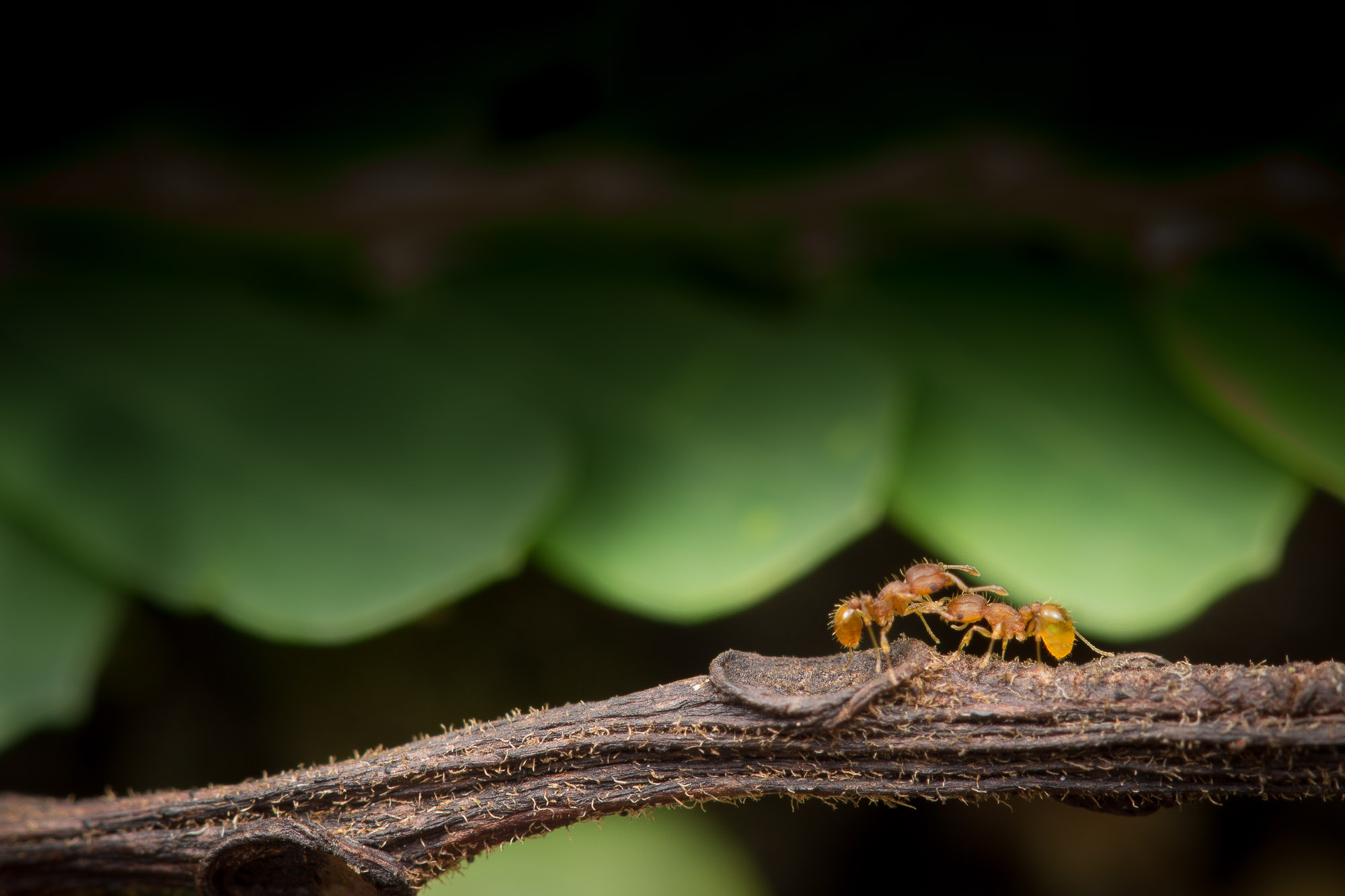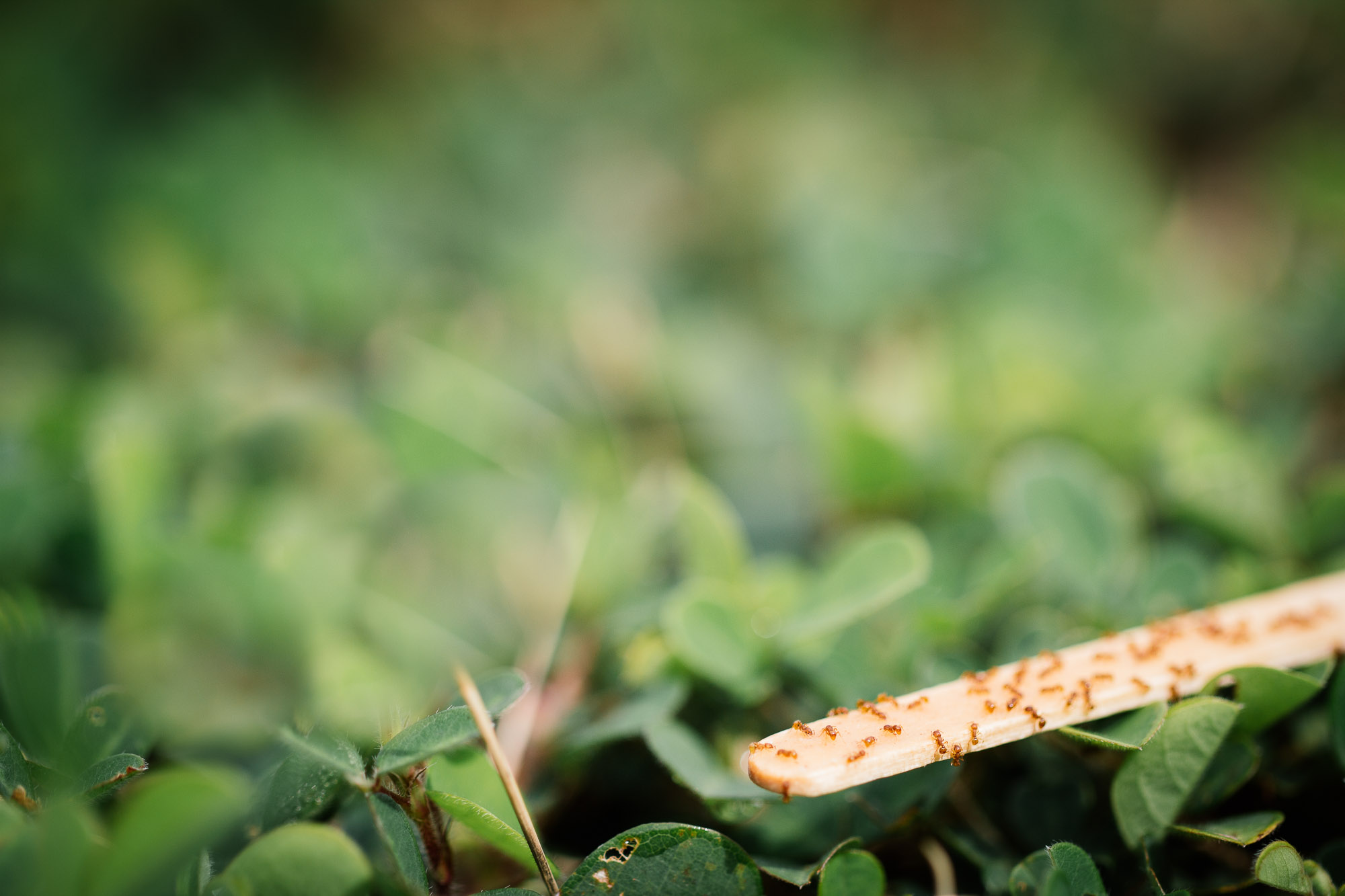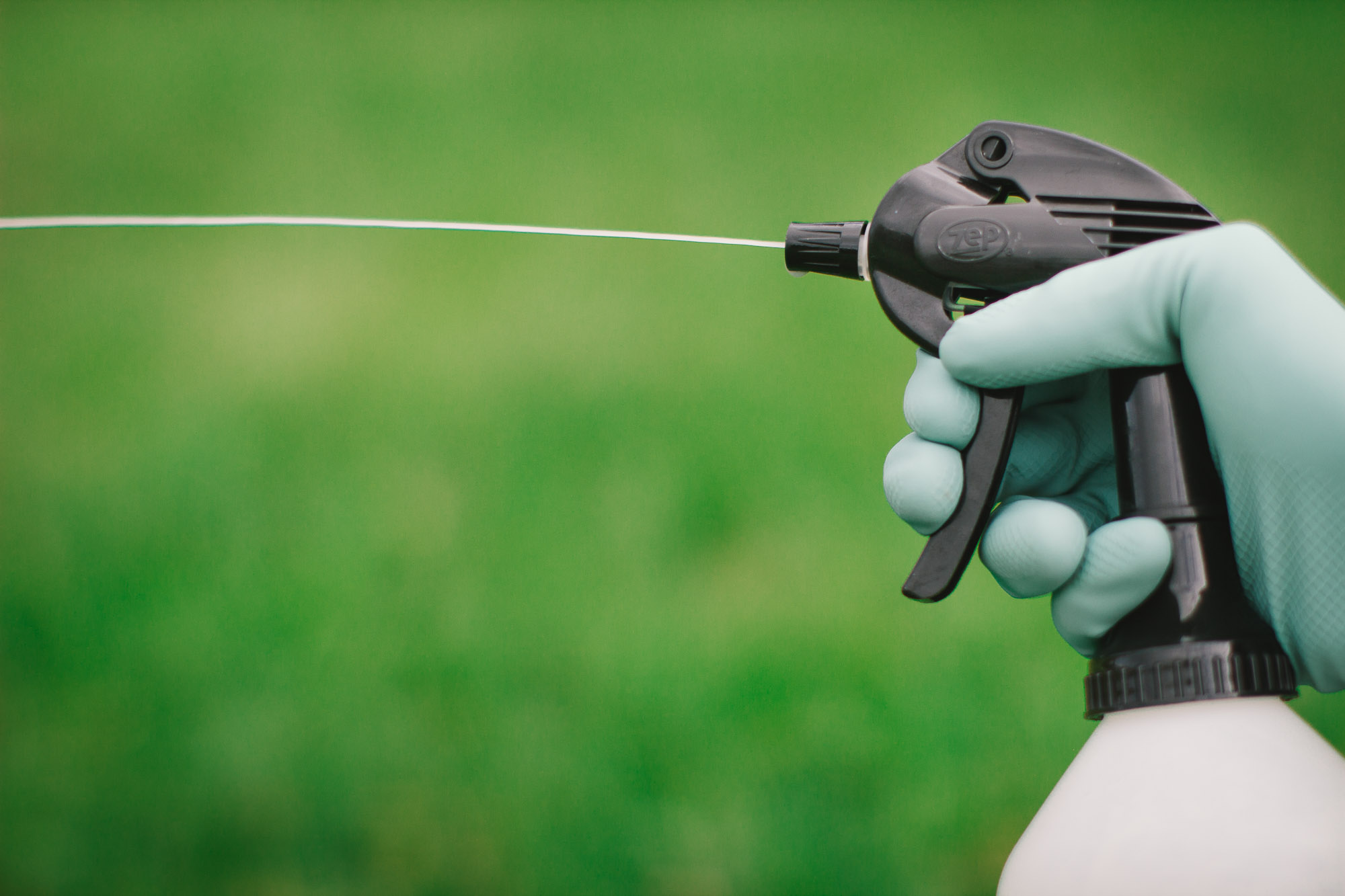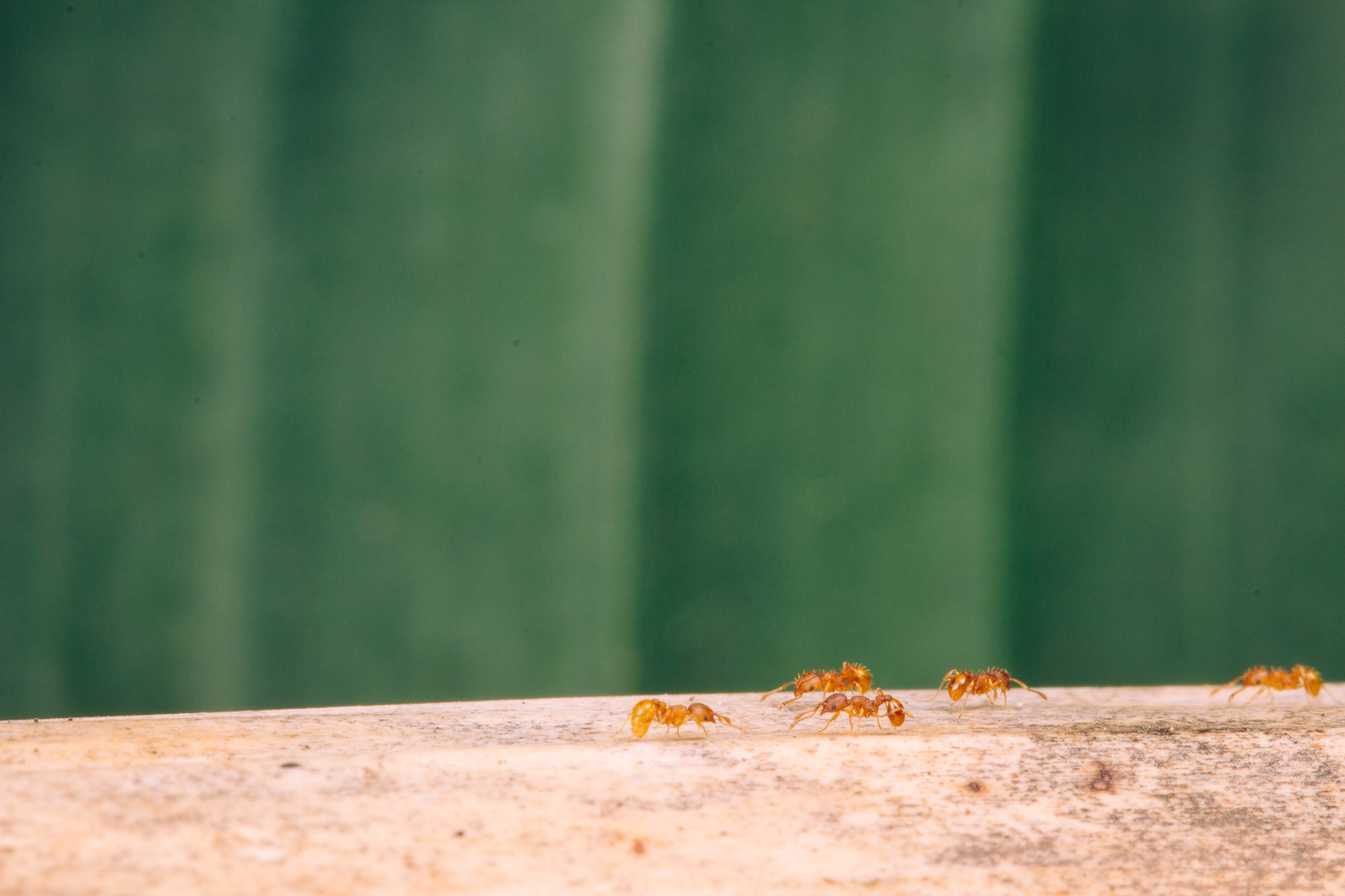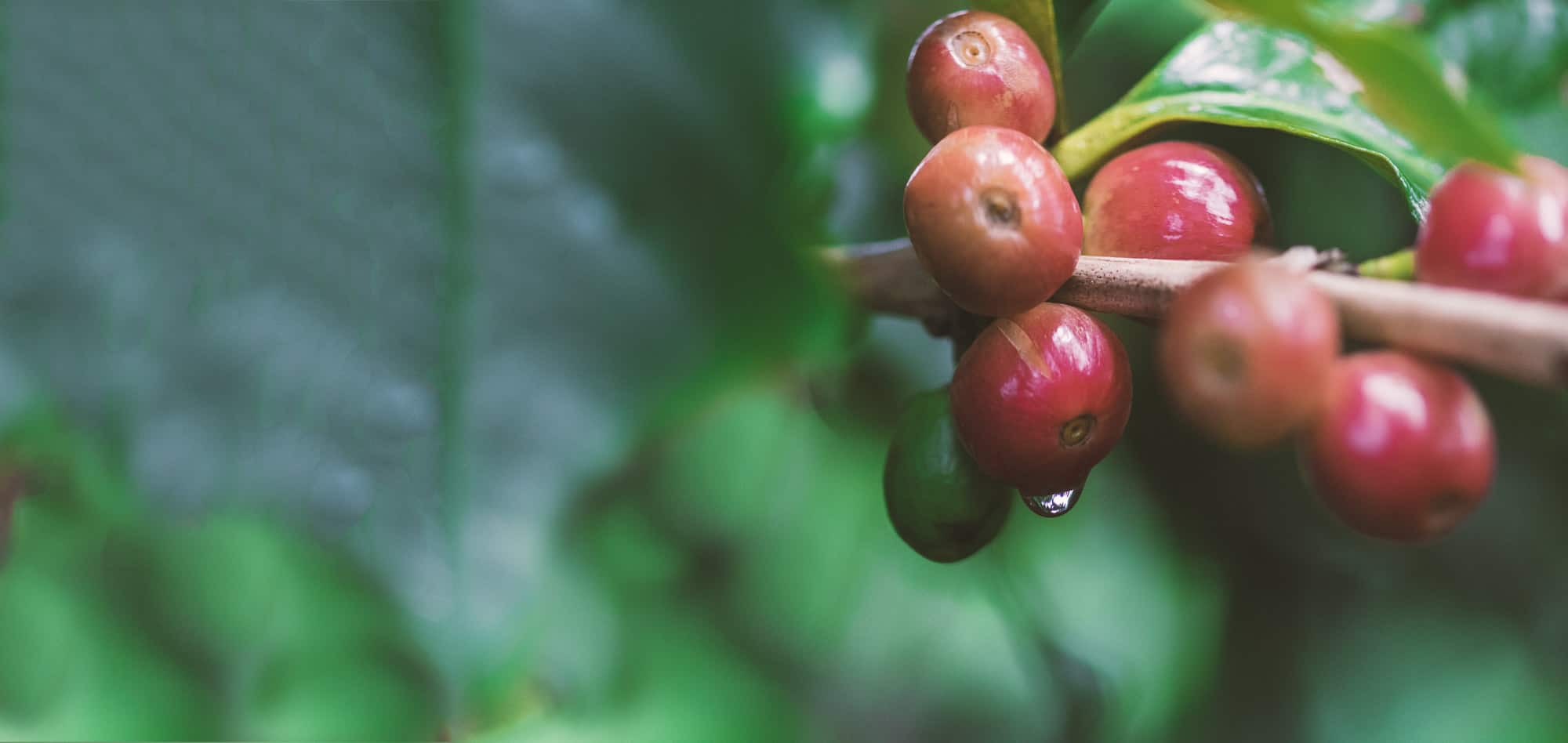Welcome to the Hawaiʻi Ant Lab
The Hawaiʻi Ant Lab, a program of the University of Hawai‘i Pacific Cooperative Studies Unit, is dedicated to increasing knowledge about invasive ant biology, management, and eradication.
We Moved!
Our new Hilo office is located a the CTAHR Komohana Research Center. Our mailing address is: Hawaii Ant Lab, 875 Komohana St, Suite 213, Hilo, HI 96720.
Please call us at (808) 315-5656 before stopping by to ensure staff are available to assist you.

What We Do

Research
We study invasive ants and develop new methods to manage them. This is an ongoing process that makes HAL the leading agency on LFA management strategies in the world.

Extension
We educate stakeholders on preventing the spread of invasive ants and provide best management strategies based on our research.

Operations
We survey ports of entry, green waste facilities, nurseries, and other high risk areas for invasive ant species, as well as participate in LFA eradication efforts throughout the State.
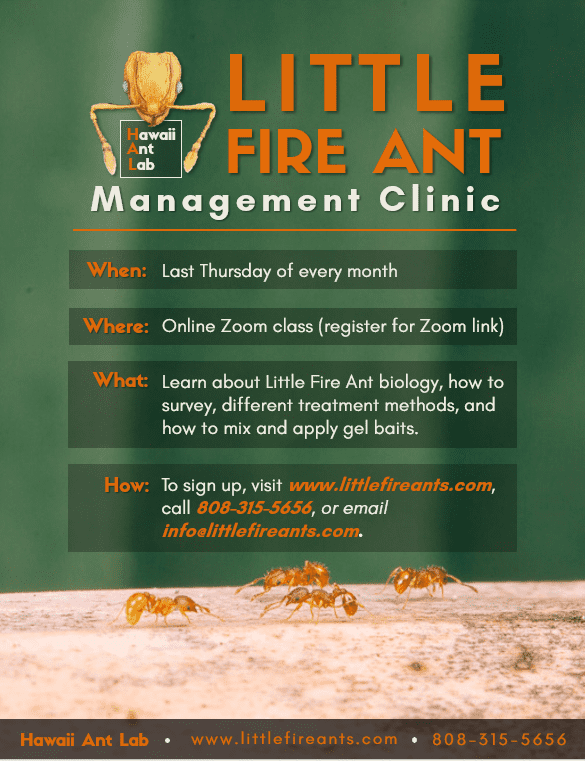
Ant Management Class
Once a month, Hawaiʻi Ant Lab conducts a FREE 1.5 hour class for residents and other interested persons. This class covers ant management basics from theory to practice and includes sessions on Little Fire Ant biology, how to survey, mixing and using gel baits, and pretty much everything you want to know about managing Little Fire Ants around your home.
Currently, we are holding the class on-line through Zoom on the last Thursday of every month. Register to obtain the Zoom link.
Our Hilo Office Has a New Home!
We’re excited to share that the Hawaiʻi Ant Lab’s Hilo office has officially moved! Our new location is at the CTAHR (Center for Tropical Agriculture and Human Resources) Komohana Research and Extension Center on the University of Hawaiʻi at Hilo upper campus. We are no longer located at the Hawaiʻi Department of Agriculture (16 E. Lanikaula St). Mailing Address…
We are hiring!
Oahu’s way of life is under threat from one of the world’s worst invasive species – Little Fire Ants (LFA)! We’re looking for a detail-oriented, highly organized individual to help lead LFA surveys and control efforts on residential properties and ports of entry across Oahu. This role involves overseeing field crew, collecting and analyzing data,…
Amdro® Has a New Look!
If you’ve been to your local hardware store recently, you might have noticed that Amdro® has unveiled new packaging for its pest control products. Understanding Amdro® Products Amdro® offers a range of products designed to eliminate pests such as gophers, ticks, and ants. However, it’s important to choose the right product for the specific pest…
Connect With Us
Make a Donation
Your donation will contribute to tackling the invasive ant issues faced by Hawaiʻi by supporting our research, extension, and field operation programs.
